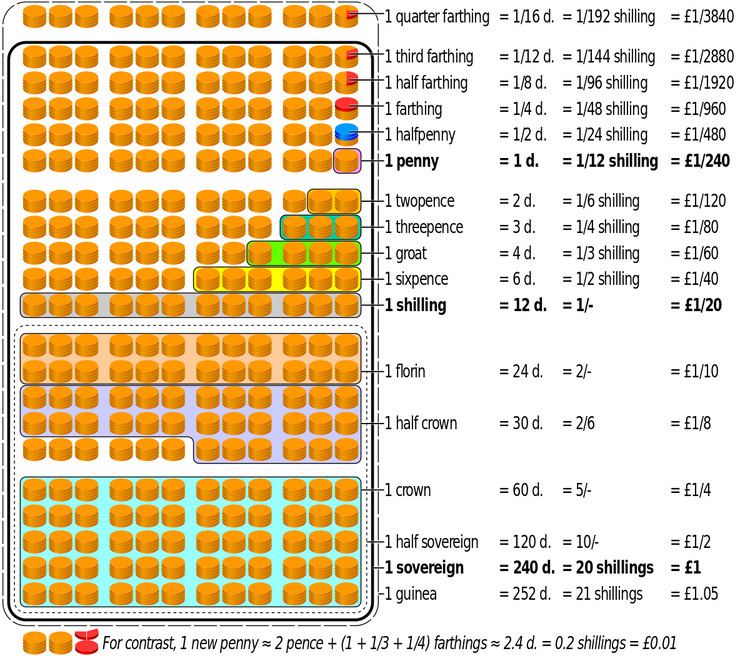 | ||
Pre-decimal
Prior to decimalisation in 1971, there were 12 pence (written as 12d) in a shilling (written as 1s or 1/-) and 20 shillings in a pound, written as £1 (occasionally "L" was used instead of the pound sign, £). There were therefore 240 pence in a pound. For example, 2 pounds 14 shillings and 5 pence could have been written as £2 14s 5d or £2 14/5.
The value of some coins fluctuated, particularly in the reigns of James I and Charles I. The value of a guinea fluctuated between 20 and 30 shillings before being fixed at 21 shillings in December 1717. These are denominations of British, or earlier English, coins – Scottish coins had different values.
Notes:
Decimal
Since decimalisation on "Decimal Day" in 1971, the pound has been divided into 100 pence. Originally the term "new pence" was used; the word "new" was dropped from the coinage in 1982. The old shilling equated to five (new) pence, and, for example, £2 10s 6d became £2.52 1⁄2. The symbol for the (old) penny, "d", was replaced by "p" (or initially sometimes "np", for new pence). Thus 72 pence can be written as £0.72 or 72p; both were commonly read as "seventy-two pee".
